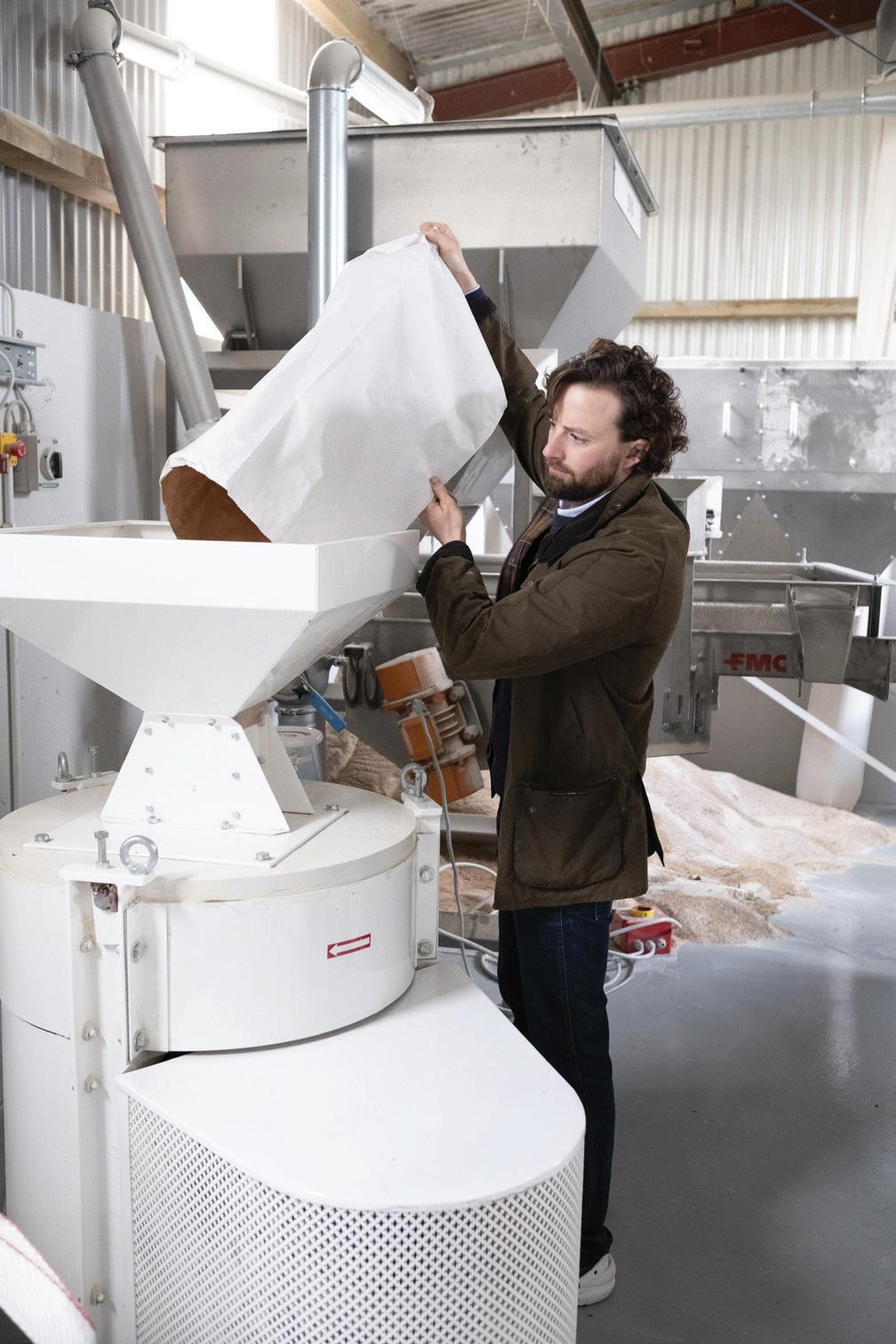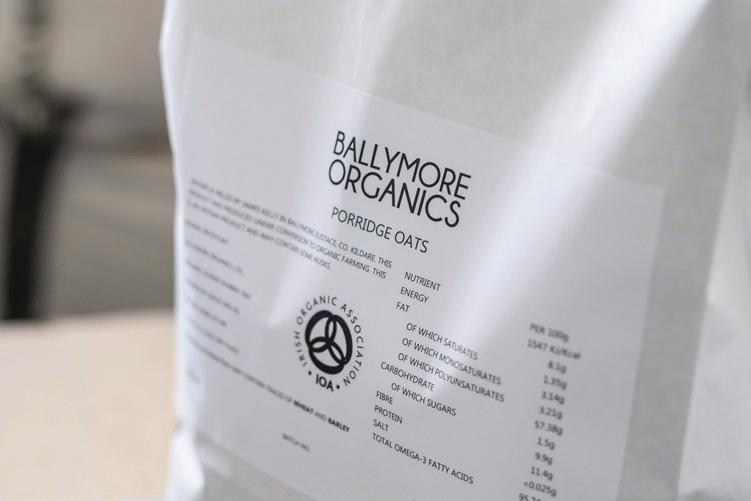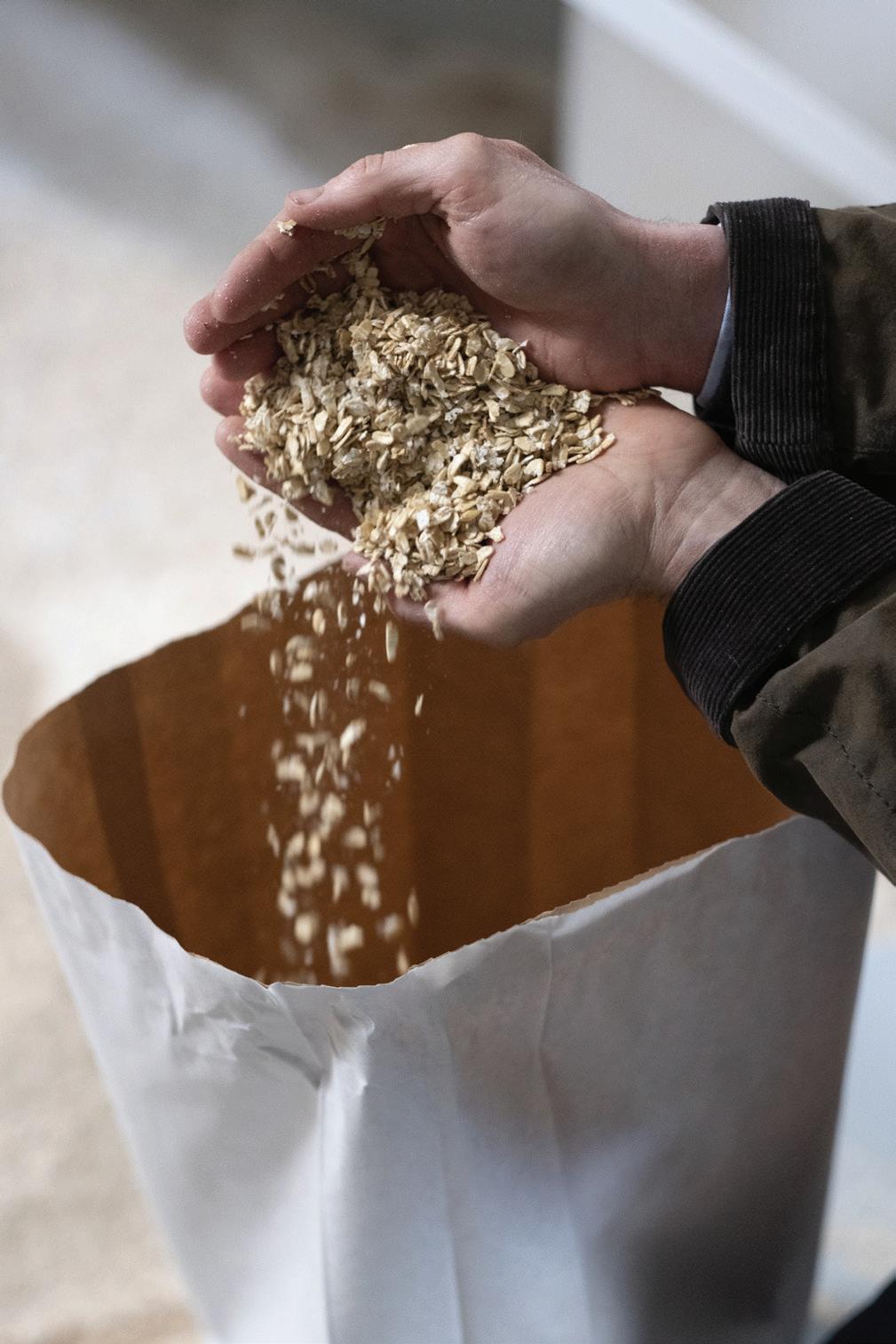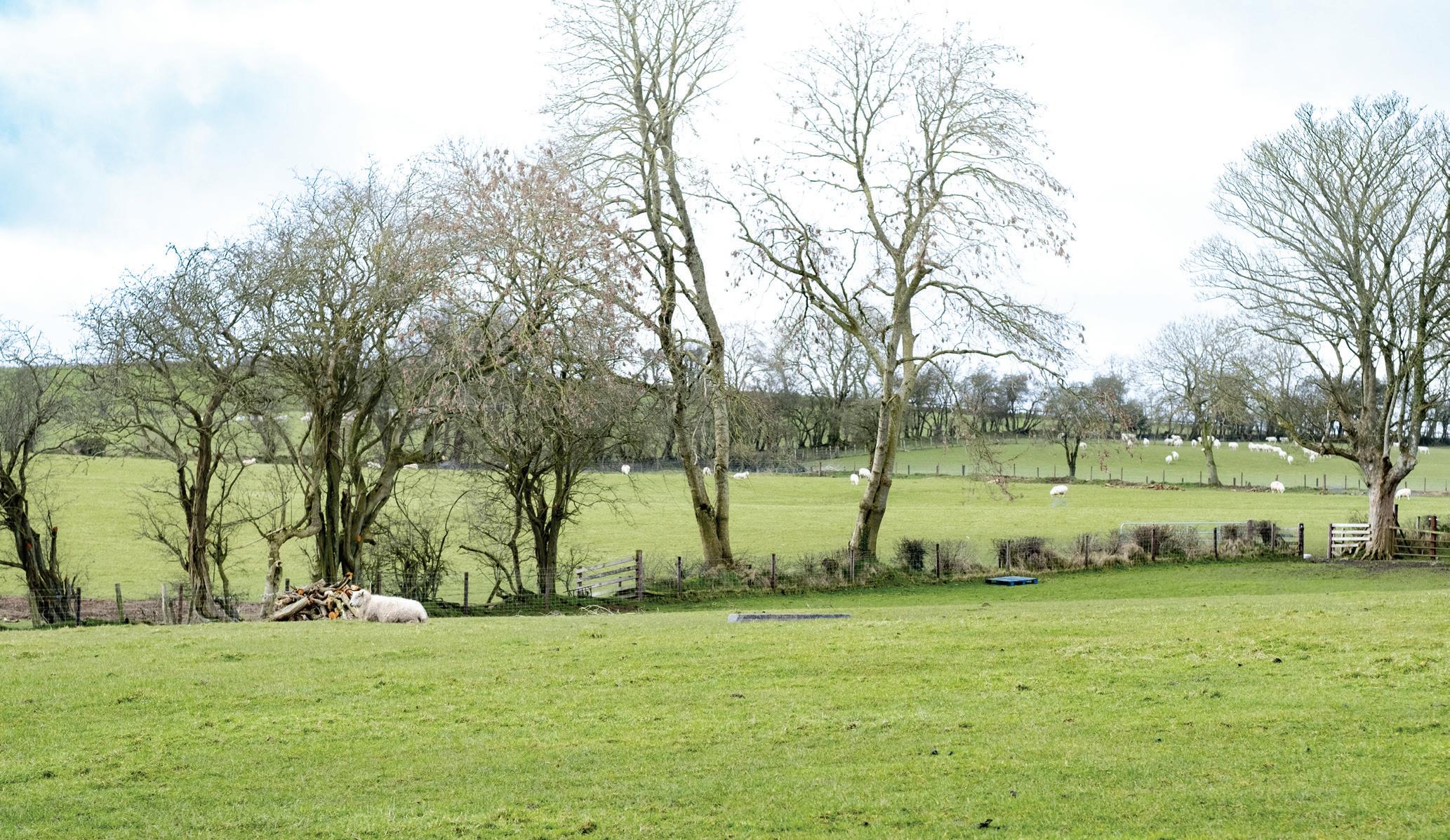
4 minute read
Ballymore Organics
Ballymore Organics
ENVIRONMENTAL AWARD
Advertisement
BY CAROLINE HENNESSY
There were few reviews of Kildare’s two Michelin star restaurant Aimsir that didn’t mention the bread – Ballymore Organics heritage wheat soda bread, to be precise, cooked in ‘beef fat, laced with black treacle and Guinness, served with raw and heavily salted Crawford’s micro-dairy butter’. Served as one course of a tasting menu that was designed to showcase the best of Irish food, it put locally grown wheat centre stage and the critics raved about it. Ballymore Organics, set up by James Kelly, was the first mill to open in Kildare since Odlum’s 200-year-old Leinster Mills closed in 1989. After growing his first organic crop of ‘smashing wheat’ in 2015, James convinced Andrew Workman of Dunany Flour to mill 20kg of the grain. Positive responses to the flour meant that James decided to build a mill on the farm and he started producing his own stoneground wholemeal flour in 2017. The single-varietal, single-origin flour is expensive to grow and mill, but James’s sales pitch was simple: he contacted hotels and restaurants telling the chefs about the way that he farmed and got them to try the flour. The hook was the flavour. Soon his flour was being namechecked on menus at Aimsir, Ashford Castle, Dromoland Castle and Adare Manor and James was dealing regularly with Michelin-starred chefs.

With wholemeal flour selling well, James expanded his range of products to plain flour and semolina at the beginning of 2020. He also started milling the oats that he grows, becoming Ireland’s only grower and miller of both wheat flour and porridge oats. As well as selling direct to chefs, he invested in a small webshop, selling small amounts of 5kg, 10kg and 20kg bags of flour and porridge oats – until everything changed on 14 March 2020. While James’s trade customers disappeared overnight, online orders – fuelled by a Covid-caused flour shortage – skyrocketed. Consumers locked down at home now actively wanted to buy Irish and support Irish farmers and producers, and with flour shelves empty in the supermarkets, it made a lot of sense to buy in bulk. James credits Covid-19 with putting his products on the map and he worked round the clock during the first lockdown, dispatching bags of freshly milled flour from Kildare to gladden the hearts of home bakers all around Ireland. Whether it’s silky, unbleached plain flour that enhances the flavour of everyday baking and cooking, nutty-flavoured wholemeal for bread, semolina for pasta-making or unsteamed rolled jumbo porridge oats that are a chewy treat at breakfast, once you’ve started using James’s Irish-grown cereals, all certified by the Irish Organic Association, it’s difficult to go back to bland, anonymous supermarket products. The good news is that James is not the only person doing this. He’s one of a new wave of Irish craft millers, people who grow and mill their own cereals, and there are people out there – chefs, professional bakers and home bakers – who are willing to pay for the pleasure of using flour that is grown and milled locally. The synergy between flour with provenance and other quality Irish food has never been so delicious. ballymoreorganics.ie



Ballymore Organics fresh pasta
Recipe by Caroline Hennesy
When simple ingredients are this good, there’s no need for an elaborate sauce. Serve with wild garlic pesto, brown butter and lemon, some grated Killeen Farmhouse Cheese or in the bollito broth on page 23. Serves 4
150g Ballymore Organics stoneground plain flour, plus extra for kneading / 150g Ballymore Organics stoneground semolina, plus extra for rolling / 3 medium eggs, beaten
Place the flour and semolina in a mixing bowl and whisk together. Make a well in the centre and pour the beaten eggs into it. Mix with a wooden spoon until everything is roughly combined. Tip the dough out onto a lightly floured surface and knead for 10 to 15 minutes, until it becomes smooth and springy. Cover with cling film and leave to rest for 30 minutes. Clamp a pasta machine to a clean work surface and dust the area with a little semolina. Taking one-third of the dough at a time, work it through the pasta machine, feeding it through the widest to the narrowest setting according to the kind of pasta that you want to make. For long pasta like tagliatelle, linguini or pappardelle, slice into lengths, dust with a little more semolina and allow to air dry. Cook in a large saucepan of boiling salted water for 3 to 5 minutes, until al dente, then toss with your chosen sauce and serve straight away.








